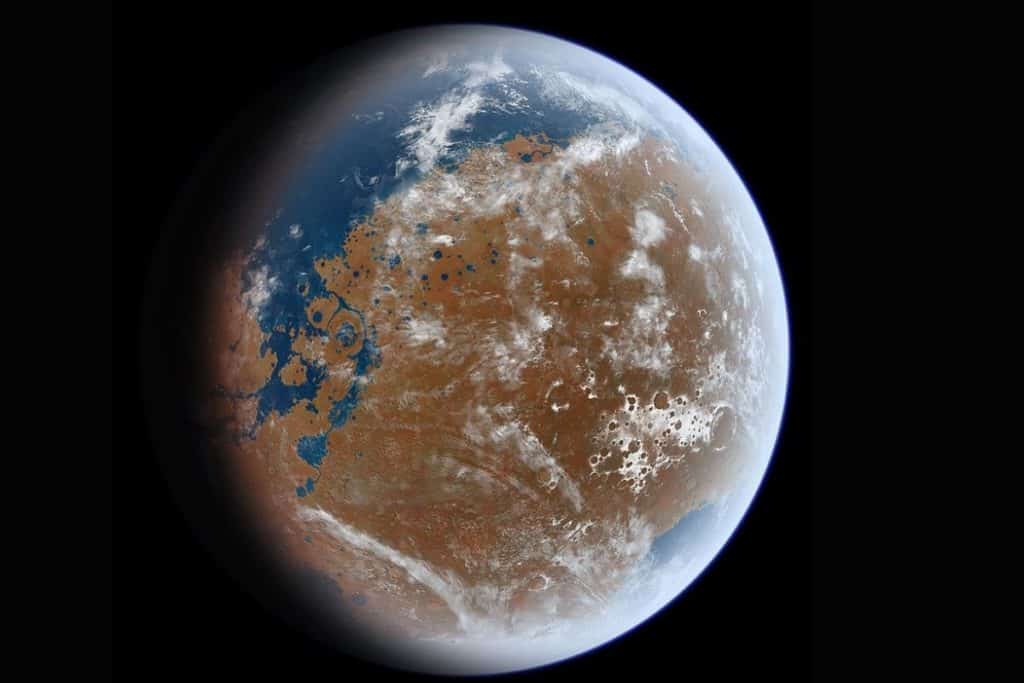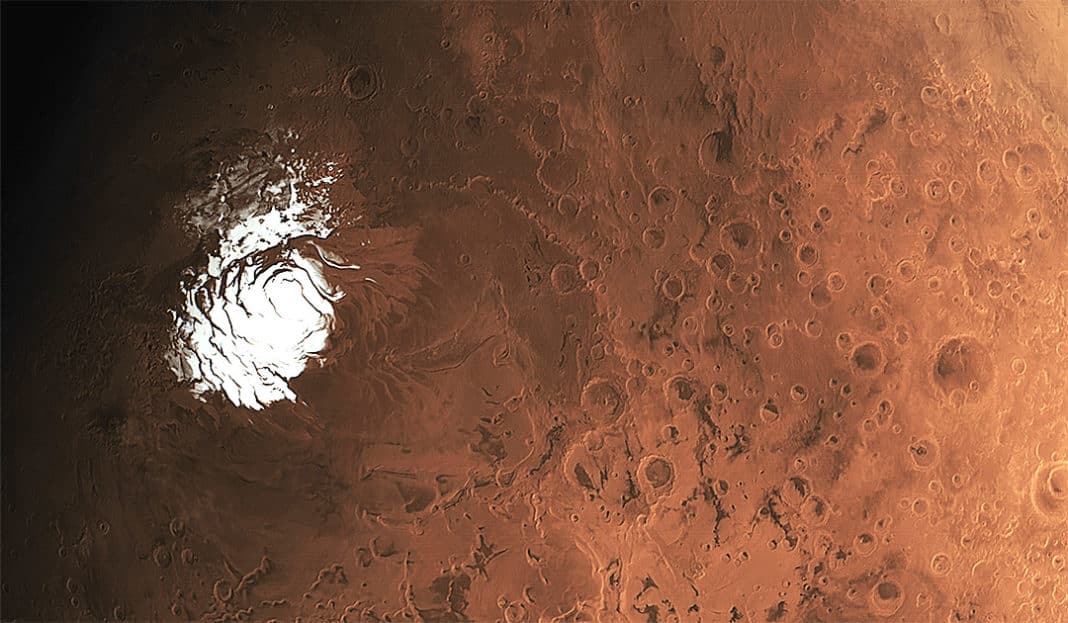It’s a longstanding mystery of how Mars lost the water that had previously flowed on the planet’s surface billions of years ago
Scientists now think that they have an answer; that much of the water on Mars became trapped within the outer layer of the planet, which is its crust.
They argue that the vast amount of the ancient water on Mars is locked up within the minerals that are located below the surface of the Red Planet.
The findings have been discussed during the 52nd Lunar and Planetary Science Conference and are published within Science journal.
The study used measurements that had been gathered from Mars-orbiting spacecraft, as well as rovers and meteorites.
Researchers then developed a digital simulation of how the water was lost over time.
This comes after China and Russia have announced their intentions to build a new lunar research station on the moon together, launching a new era of collaboration between the two countries, set in space.
Over four billion years ago, Mars was warmer and covered in water, with possibly a thicker atmosphere that it has now. Water flowed through rivers, cutting channels in the rock, and pooled into impact craters on the surface of the Red Planet.
But by around a billion years later the planet had made a transition into the cold, desolate planet that we recognise as Mars today.
“We have known for a long time that Mars was much wetter in its early history. But, the exact fate of that water has been an ongoing problem,” said Dr Peter Grindrod from London’s Natural History Museum, who was not involved with the latest study.
“We already know from studies of the atmosphere of Mars that some of that water was lost to space, and ice deposits on and just below the surface tell us that some water became frozen.”

Earth is surrounded by a magnetic shield, also known as a magnetosphere, that prevents any of the atmosphere from escaping. But Mars’ magnetic shield is much weaker and could have allowed the elemental constituents of water to escape the planet.
But the rate at which hydrogen, one of the chemicals that constitute water, escapes from the atmosphere of Mars today suggests that this mechanism can’t explain where all of the planet’s the water went.

Eva Linghan Scheller and her colleagues from the California Institute of Technology (Caltech) located in Pasadena, now think that they have come up with the answer to this queery.
The results of their computer simulation work show that between 30% and 99% of Mars’ initial water had been incorporated within minerals that were then buried in the planet’s crust.
Co-author Bethany Ehlmann, from Caltech explained that, “by studying data from Mars missions, It became clear that it was common – and not rare – to find evidence of water alteration”.
She continued: “When the crust becomes altered, it takes water – like liquid water – and sequesters it in a hydrated mineral that has water in its structure so that it is effectively trapped.”
This comes after the first pieces of meteorites to have been found in the UK for three decades have been discovered in a village within the Cotswolds. Scientists have described the new find as “incredibly exciting” and have confirmed that the rocks are pieces of a very rare type of meteorite, which is the first of its kind to have ever been found in the UK.
The authors suggest that most of the planet’s water was lost between about 4.1 and 3.7 billion years ago, which was during a stretch of Martian history that is known as the Noachian Period.
Dr Grindrod added: “What this new study tells us is that a lot of that water, possibly the majority, could have actually been locked into the rocks on Mars. This process of hydration is capable of storing large volumes of water, up to an amount equivalent to a global layer a kilometre deep.”
“Although most of the liquid water had probably disappeared after about one and a half billion years after Mars formed, we see evidence of hydrated minerals at the surface today, in areas like Jezero Crater, which is currently being explored by the Perseverance rover.
“The early climate of Mars remains one of the most important topics in planetary science, and this study will help our understanding of the processes responsible for water loss.”
